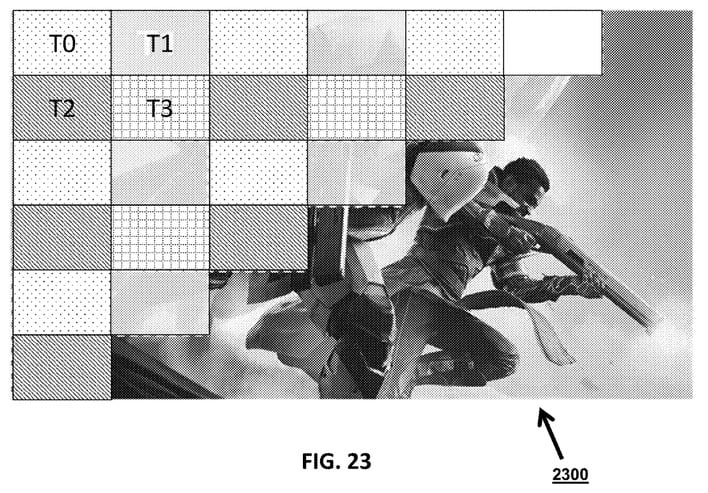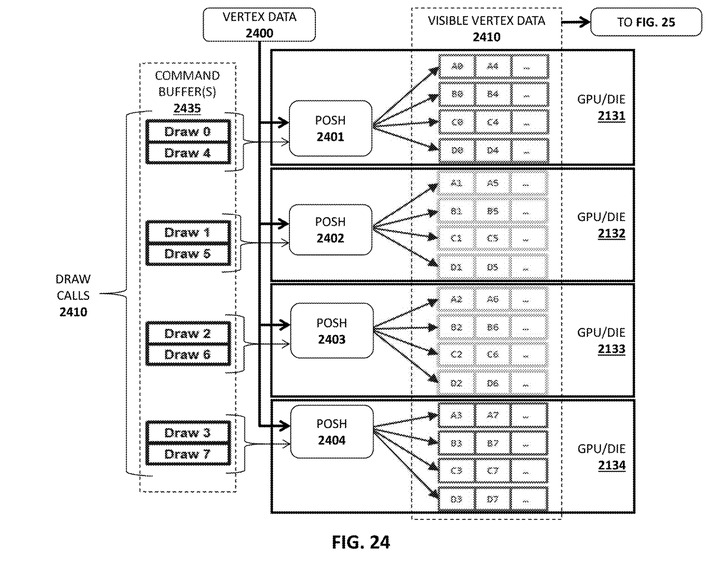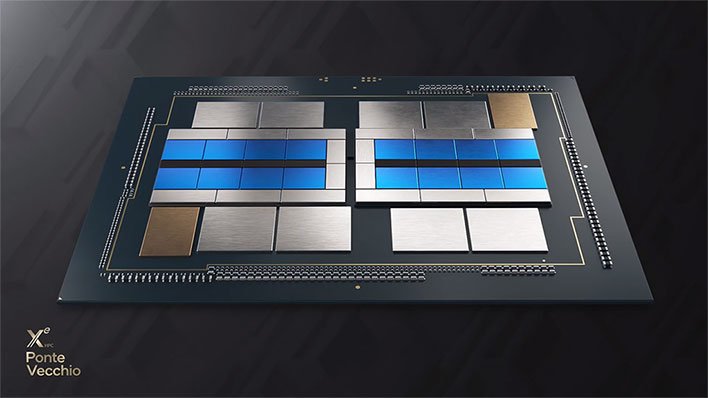Intel's MCM Design Patent Could Be A Sneak Peek At Future Arc Gaming GPUs
Here's a processor primer for novices: classical computing workloads are largely "serial", meaning they go through problems A, to, B, to C, in a series. CPUs have historically been designed through the years to be better and better at this kind of workload. More and more, though, we're also doing parallel work, which is to say workloads that can process problems A, B, and C simultaneously. 3D graphics rendering (whether for games or otherwise) is one such workload, and that's why the most common parallel processors are GPUs today.
One relatively simple way to make a faster parallel processor is to simply make it bigger. By adding more and more functional elements, you can make your parallel processor capable of handling more work simultaneously. As long as your workload is massively-parallel—as graphics graphics rendering usually is—you can get a near-linear increase in performance this way. This kind of thinking is what has led us to the gigantic, power-slurping GPUs we have on the top-end of AMD and NVIDIA's product stacks currently.

Using multiple processors to perform graphics work is no novel idea, of course; even before real-time 3D graphics were a thing, folks were using powerful multi-processing systems to perform so-called "offline" 3D rendering. The difficulty with MCM GPUs is in figuring out exactly how best to sub-divide the work among multiple separate processors. It's one thing when you have parallel functional elements inside a processor working from the same caches; it's another thing altogether when you have two or more discrete processors working in tandem.

AMD has already filed its own patent for a similar technology; indeed, its distributed graphics processing patent also works by using a checkerboard render system. You can read these filings yourself for reference if you'd like: Intel's patent is here, and AMD's is over here.



